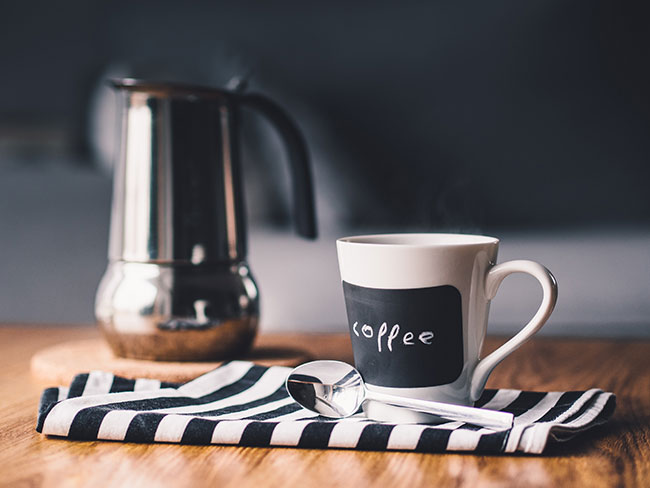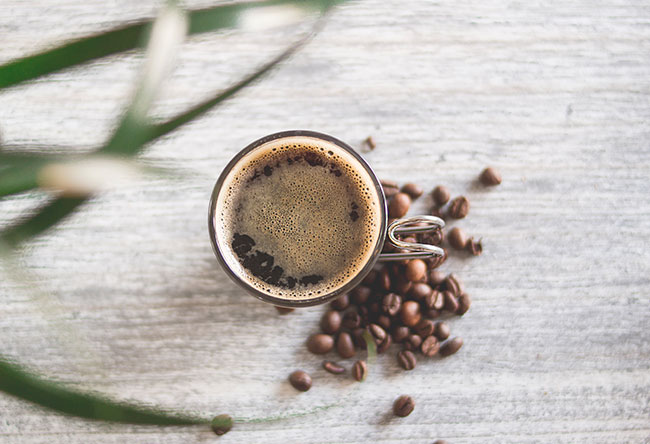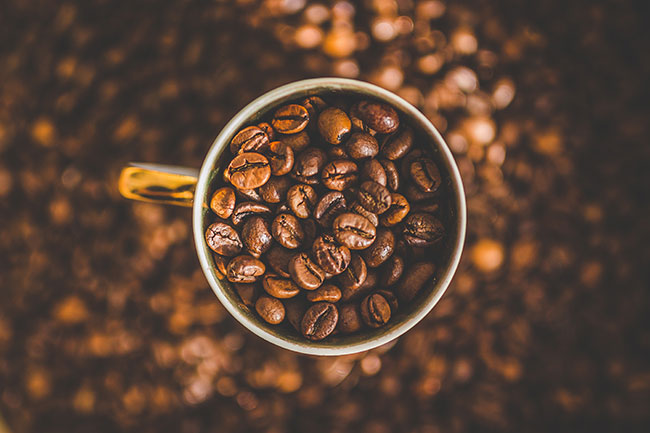It might not surprise you to hear that coffee was discovered a very long time ago. While new variation of it are coming out on the market all the time, the actual discovery of coffee was made way back hundreds of years ago. It was first found in Ethiopia in the 11th century, supposedly by a goat farmer.
He stumbled upon our favorite hot drink purely by accident after watching his goats eat some strange berries and they became a hyperactive afterwards. If they ate enough of the berries, they wouldn’t even sleep. The farmer knew there must be something impressive inside these berries.
He reported his findings to the local monastery, who cooked the berries up with some water and made it into a drink. People realized that drinking this mixture kept them alert, and aside from drinking it in their own houses, they would also frequent special coffee houses.
Those people were able to focus on work and learn about the world to the extent that these coffee houses were referred to as schools of the wise.
By the 17th century, coffee had moved across to Europe where it was met with not quite a positive response. People were skeptical of its power and first called it the bitter invention of Satan. Luckily that impression didn’t stick around…
The most expensive coffee
We’re usually happy paying a couple of dollars for a cup of coffee, or maybe a few more for the promise that it’ll be extra special, but you know how much the most expensive coffee in the world costs?
You might be surprised to hear that it can cost you anything from $35 to a $100 a cup, depending on where you buy it. That’s definitely a lot from something we’re used to drink most days.

The world’s most expensive coffee, is called Kopi Luwak and comes at a such a high price because of how it’s made. The coffee is made in a truly unique way. The beans used have been passed through the digestive system of a cat-like creature, called, the civet cat.
Cat produces the feces which is then collected, finished and sold as a Kopi Luwak. If you still need any reason as to why it’s so expensive, you should bear in mind that you can’t just pick these beans, you have to wait for nature to do its work.
The attempts to ban it
Nothing sparks fear in our hearts quite like someone telling us they’re out of coffee. How else are we supposed to wake up in the mornings? If that doesn’t sound like a good start to the day to you, then we’ve got some more bad news.
In the past, there have been five attempts to actually ban coffee. Imagine that! No more morning wake up each day. How wold we survive?
Luckily, as you’ll have noticed from the ever-growing number of coffee shops around, all the bans were unsuccessful.
One band was focused on coffees ability to wake us up and let us do things faster. In Mecca, Saudi Arabia, in the year 1511, coffee was banned by the governor who thought it encouraged radical thinking. He was convinced, drinking too much coffee would give people the ability to overpower him. Ironically, he was soon overpowered by the Sultan of Cairo who thankfully bought us back the ability to drink coffee.
Another interesting band, happened in Prussia in the year 1777. Frederick the Great thought beer was the true drink of the people and tried to ban coffee as a result. The people ignored him and kept drinking their real favorite drink, coffee.
It’s very popular
Coffee was once said to be the second most traded commodity in the world. However, no one is truly sure if this is accurate or not, because of trading rates changing so often, but we know for sure it’s definitely up there with the most popular items when working out the most heavily traded items. Experts look at the price of the good per dollar and then work out how much of it is actually being traded. You can then see why the official figures shift all the time, but coffee’s annual export cost is thought to be around nineteen billion dollars. It’s definitely a huge industry!
This is just one reason why it’s great that those bands didn’t go through, because look how heavily we rely on it.
The only item more traded then coffee is oil, witch shouldn’t be too much of a surprise really. Behind coffee is natural gas and then gold. We’re not too fussed about oil or gas, but we can see the attraction to gold, but we can’t drink gold and it won’t wake us up in the morning, so we’re pleased to hear that coffee wins its rightful spot in the top rankings.
There are only two types
If you’ve got a friend who doesn’t drink much coffee, they might not be so surprised to hear this next fact, but for the rest of us who need at least one cup a day to survive, we’re fully used to describing our favorite type down to how its topped up and exactly how it’s made. Actually, despite all of the different combinations you can find in coffee shops, there are actually only two types of coffee beans. It doesn’t matter whether you ask for an espresso, cortado or cappuccino, because they’re all made up from the same beans. The difference you’re paying for is the additions, like the milk or flavoring.
The two different types of coffee beans are called, arabica and robusta. 75% of the world’s coffee falls into the first type as the second is thought to be a lot bitter and not quite as drinkable. The reason for the bitterness is because robusta beans have almost doubled the amount of caffeine inside them compared to arabica. Both are high in antioxidants and some coffee shops will combine both in your cup, so you can enjoy the benefits of a high caffeine kick but also a good taste.
Where does it come from?
We’ve already learned that coffee was discovered in Ethiopia, but that doesn’t mean most of it is still produced there today. In fact, it’s somewhere completely different: Brazil.

Coffee entered the country in the 18th century by French settlers. By this point the people of Europe had realized all the great benefits of coffee and were keen to spread it to other parts of the world too. Brazil swiftly caught onto the trend, and as of 1840 they’ve been the largest producer of coffee in the world. In 2014, the country produced a whopping 2.7 million metric tons of coffee, which is more than 30% of the world’s production. This was all grown on 300,000 plantations around Brazil on a patch of land, covering 10,000 square miles in total.
The second most popular place to grow coffee is Vietnam, which produces 1,65 million metric tons, although they also grow a lot of it, they are not quite on Brazil’s level yet. This country focuses on producing the robusta bean, because it’s cheaper. So if you’re buying a very strong cup, there’s a high chance it was grown in Vietnam.
Hawaiian Coffee
If you’re conscious of your carbon footprint, you might try and shop local. Depending on where you live, you might be lucky enough to have fresh fruit and vegetables right on you doorstep, or at least grown by a local market nearby. If you live in colder climates, then you might rely quite a bit on imported goods. You might have assumed by now that living in the United States, all of your coffee is imported, and you’re probably right, because there’s only one state in the USA that actually produces coffee: Hawaii.
The reason for this is the climate. Coffee needs high altitudes and rich coil to thrive, and it needs that constantly. The only place in the United States that has the right conditions to grow fresh coffee is Hawaii, so you might be able to get coffee from closer to home after all. The state produces a few different types but the big favorite is called Kona coffee, because of its potency. Grown in the soil of the active Mountain Lua volcano. It’s thought the natural sunlight and frequent showers of their bit to give Hawaiians the very best coffee in the US. However its growing popularity hasn’t been good for locals because now people are realizing just how delicious it is, they want to buy it too and the price has shot up.
One of your five a day?

There are many things that surprised us about the fruit and vegetable industry. The fact that tomatoes are fruits because they have seeds on the inside was one fact in particular that really got to us. Correct us if we are wrong, but we wouldn’t fancy chowing down on a couple of tomatoes and a nice fruit salad after all, and arguably, the weirdest addition to the fruit world, you guessed it: coffee.
Our beloved hot drink is actually a fruit after all or at least the beans are. In drinking form it’s more of a beverage we use to keep going, but the beans themselves are classified as a fruit. The reason for this might confuse you even more. The coffee bean which is sometimes known as the seed, grows on the coffee plant, that part might be obvious enough.
We only actually use around fifth of the coffee plant for the beans because the rest is just a plant. So an acre of coffee trees will yield 10,000 pounds of coffee fruit, which can then be made into 2,000 pounds of coffee beans. We’re glad we don’t need all this math just to drink a glass of it.
You can overdose, but with caution
Coffee is thought to be one of the healthiest things around. Taking it and mixing purely with water. It is naturally free of calories and is great for speeding up your metabolism.
It keeps us going in the morning and has many benefits to our body, but like most enjoyable things it comes with risks. It is actually possible to overdose on coffee, but only if you were gutting it all day. It’s more commonly seen in animals, rather than humans, because generally we stop drinking it when we feel like woken up, but some animals don’t have that sort of thought process. Like a group of seagulls in Canada. 40 of the birds ate used coffee grinds that they found on the floor and managed to overdose on the substance and died.
Humans luckily are less likely to fall victim and can usually get help pretty fast if the worst does happen. But it has been recorded in 2014, that a waitress in the UK drank seven double espressos and ended up in the hospital. The caffeine flooded her heart and gave her more of a shock than she was hoping for. What’s strange is the small percentage needed to react though. 7 espressos only equals around 1.1 grams of caffeine.
It keeps you healthy
We all know that drinking coffee over lots of sugary drinks is obviously going to improve our health, but you might not be so aware of all the other benefits that coffee can bring to our lives.
It’s thought that coffee helps prevent type 2 diabetes, and because of the high level of antioxidants it will help your liver too.
It’s also thought that there’s a small link between coffee consumption and preventing Alzheimer’s and Parkinson’s diseases. These problems are both very new compared to when coffee was found. It’s difficult to put an exact link between the disease’s and coffee, but scientists are investing a lot of money in checking whether we can protect our health with a cup or two.
If that wasn’t enough, a recent study found that people who drink four cups a day, were 11% less likely to suffer heart failure.
Now find a comfortable place and enjoy a cup of coffee!
